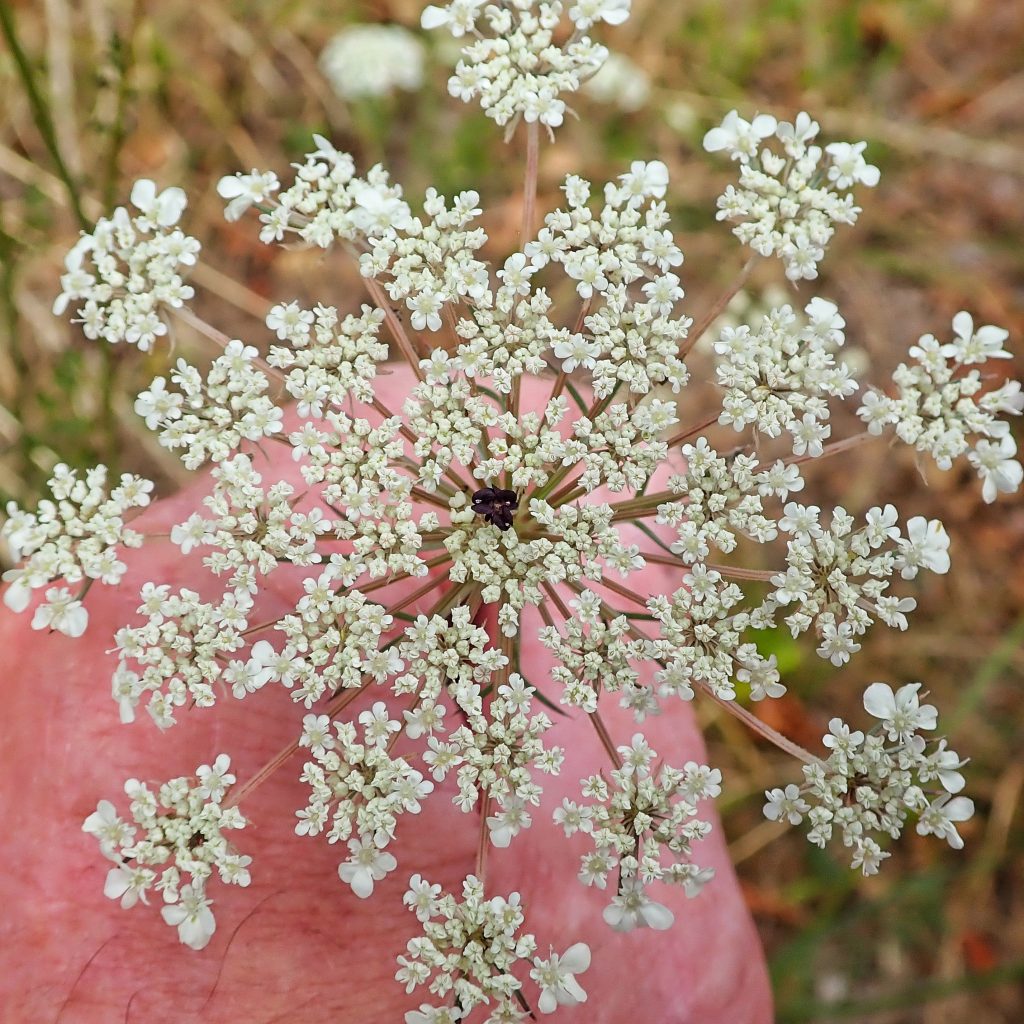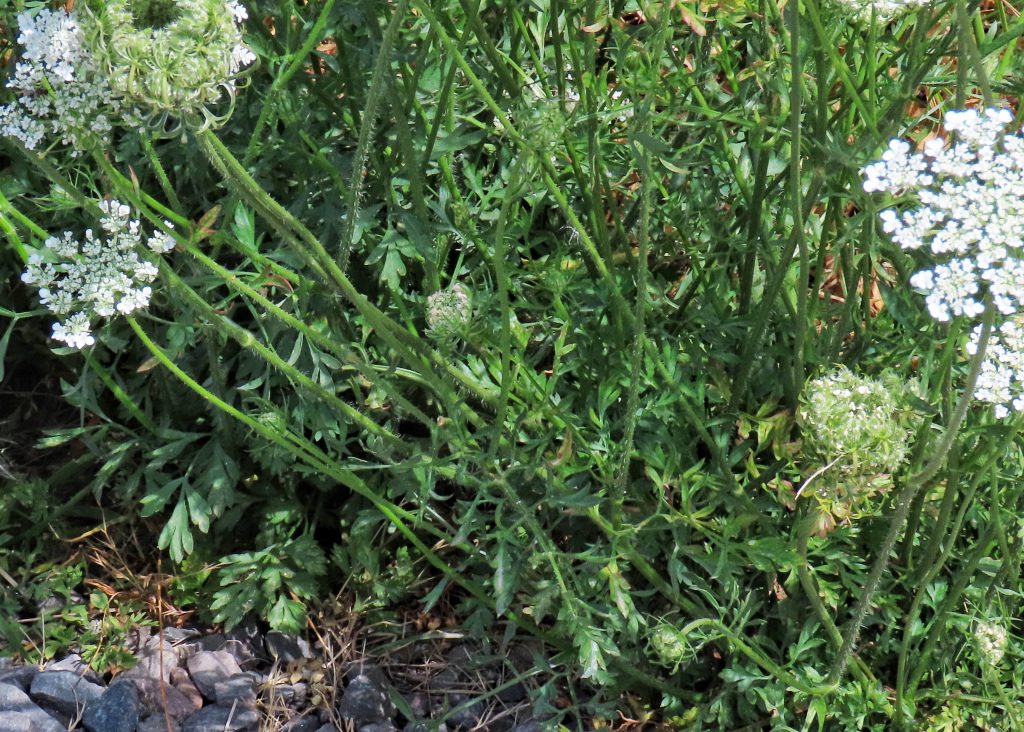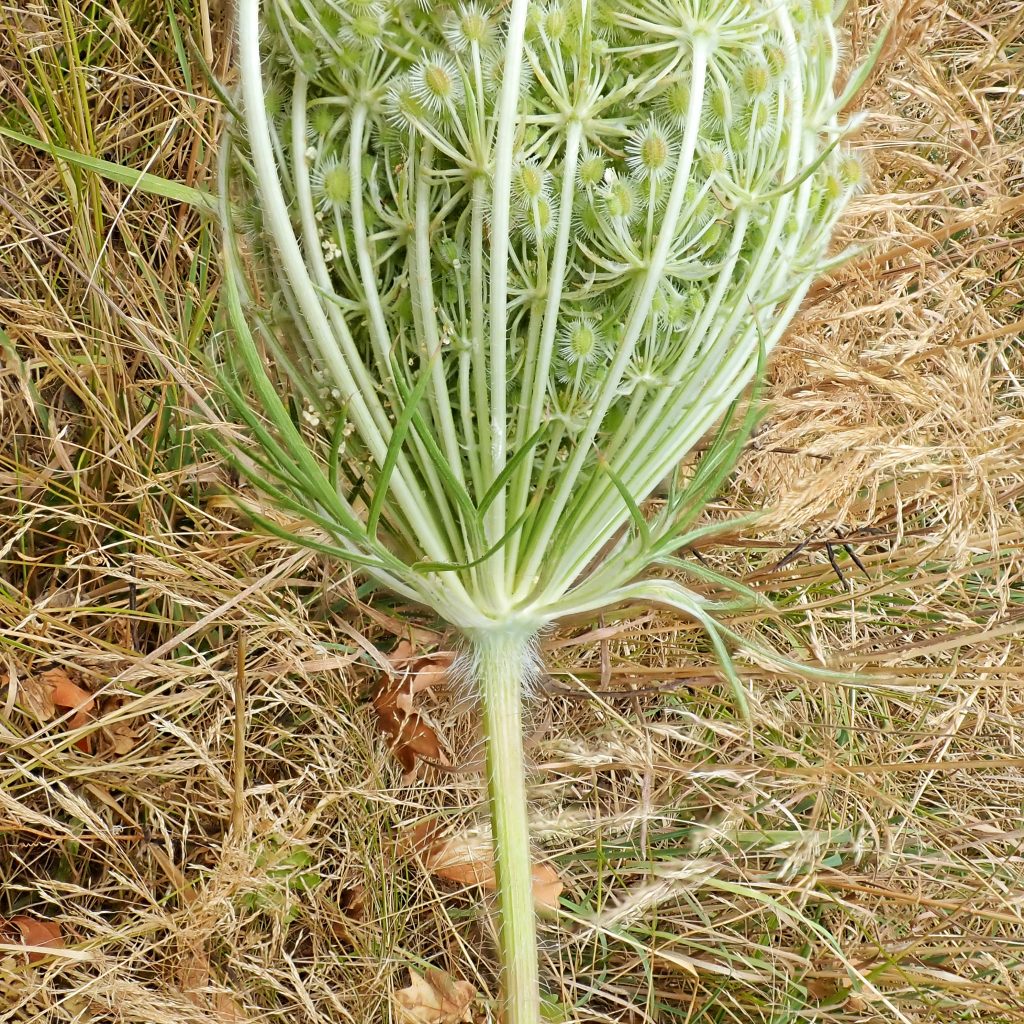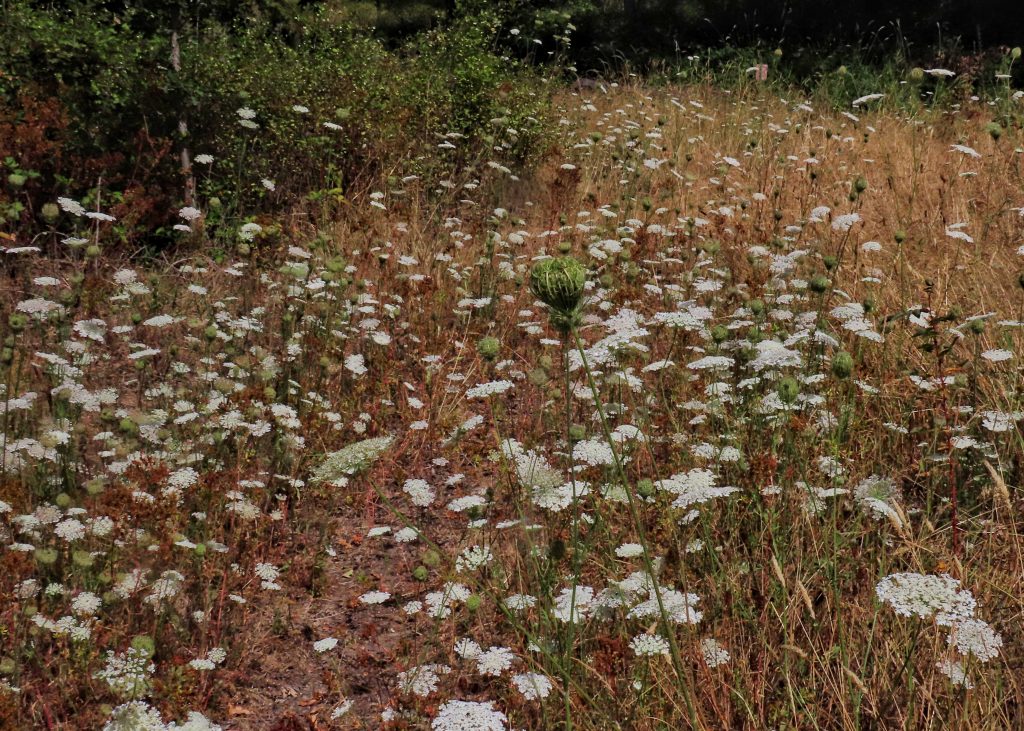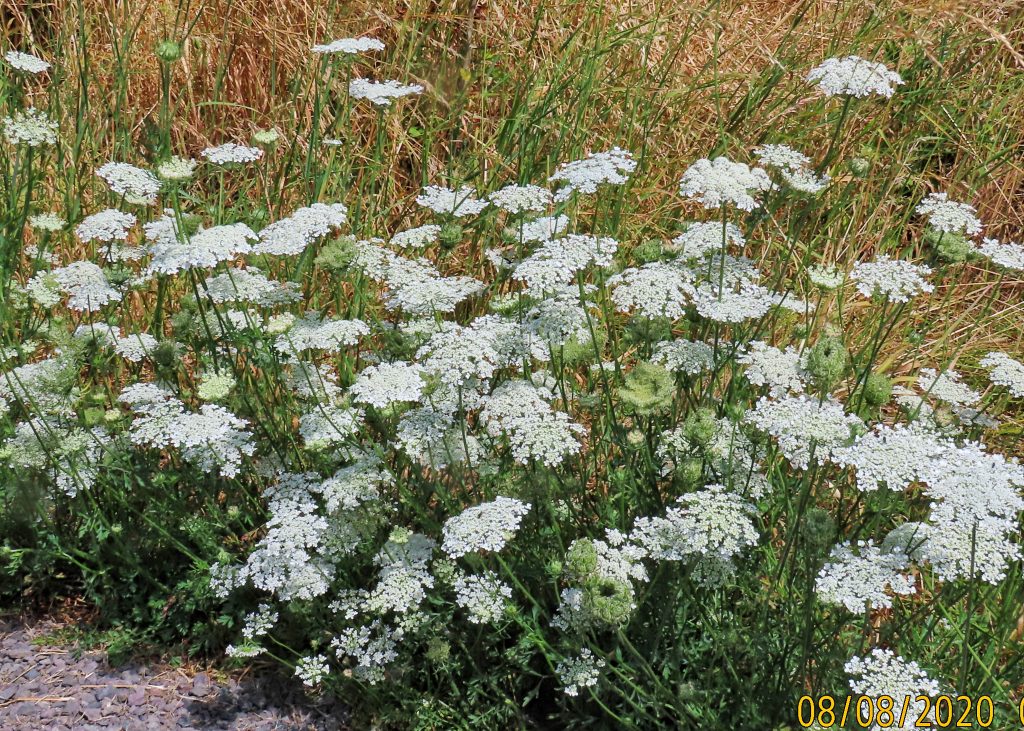
The common name of this plant is derived from the, probably apocryphal, story that Queen Anne (which could be Anne, Queen of Great Britain, or her grandmother, Queen Anne of Norway) pricked her finger while making lace and a drop of blood left a tiny dot in the center, reminiscent of the diagnostic reddish purple floret in the center of this species’ inflorescence.
This is a distinctive and nearly ubiquitous roadside wildflower, common in disturbed ground and meadows in all but the hottest and driest portions of the PNW. They can be up to 3’ tall, with a broad white umbel that curls at the edges with age and usually contains a dark floret in the center (which is thought to be a guide for pollinators), lacy leaves, and a hairy stalk.
Domestic carrots are cultivars of a subspecies, Daucus carota sativus. And many parts of the common Queen Anne’s Lace are edible. However it is superficially similar to the deadly poisonous Conium maculatum (Poison Hemlock). But they are easily distinguishable by virtue of the fact that the stem of Poison Hemlock is smooth and often purple streaked, while the stem of Queen Anne’s Lace is hairy.
The longhorn beetles Xestoleptura crassipes and Etorofus obliteratus, as well as the stinkbug Neottiglossa undata, are known to feed on this plant, and it is an important source of nectar for late season pollinators.
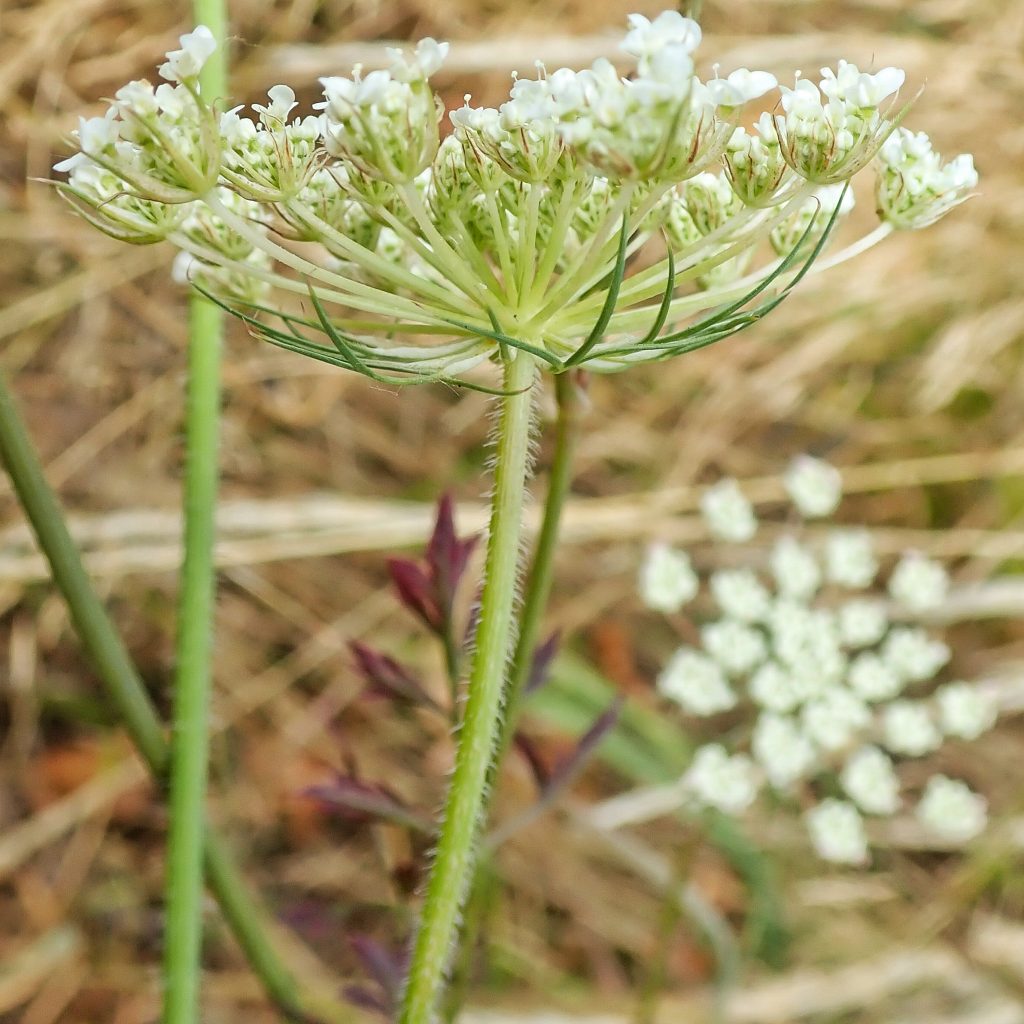
https://www.illinoiswildflowers.info/weeds/plants/wild_carrot.htm
https://plants.ces.ncsu.edu/plants/daucus-carota/
Size- 1-3’
Habitat– Disturbed ground and meadows
Range– All but the hottest, driest portions of our region. Non-native
Blooms– All summer and into the fall.
